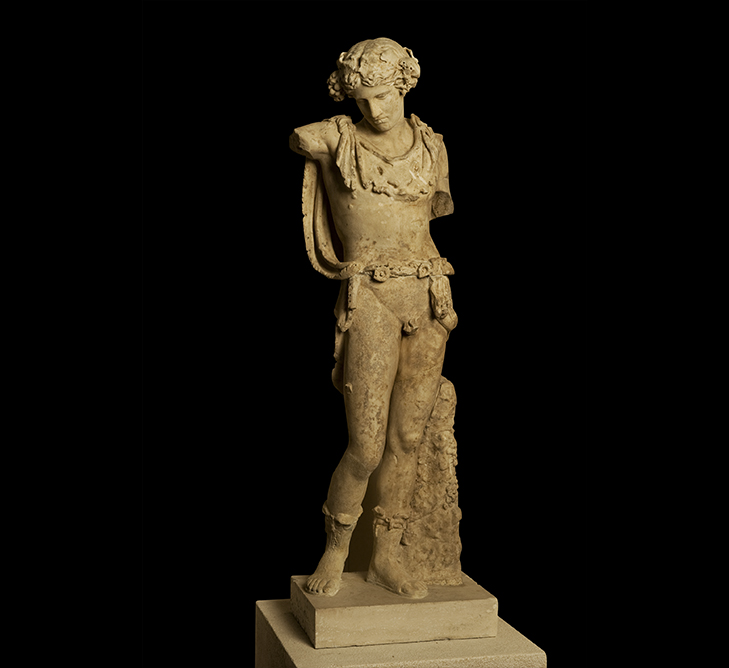

Wine seems to have always been present on our tables, so much so that its presence has been traced back to numerous places and to distant times as an accompaniment to food, sociality and health. The history of the origin of wine is parallel with the birth and development of civilisations, being lost in ancient times that pre-date history, when the vitis vitifera already appeared, from which all modern grape varieties would derive.
Noah himself, after descending from his ark following the flood, made the gesture of planting a vineyard to obtain wine, as a sign of re-birth. Numerous hieroglyphics show how the Egyptians were masters of refined oenological techniques and were well-acquainted with all the various phases of the production process, including the conservation of the wine. Yet, it was thanks to the Greeks and Romans that wine became a central element of conviviality, enjoyment and also an expression of social wellbeing and luxury.
Wine was considered such a crucial element that the Greek banquet (or deipnon) was characterised by the presence of food from the symposium, dedicated expressly to the sharing of wine, accompanied by several salty and sweet foods. The wine was not served pure, but diluted with the right proportions of water by the symposiarch assigned to this task. Simple cooked wine was also drunk, in addition to wine topped with honey, where spices and pepper were added.
According to the Greek myth, the inventor of wine was Dionysus, son of Zeus and Semele, daughter of the king of Thebes, who grew up on Mount Nyssa and, educated by Silenus - then rejoiced by the company of the Nymphs and Satyrs - diffused among men the knowledge of the vine and the beneficial and restorative effects of this precious drink. A drink of divine origin bestowed upon men through the benevolence of the son of Zeus.

Dionysus
We find Dionysus depicted with his court in multiple contexts - from wall and vascular painting to sculpture, from architectural decorative elements to statues - since both Greek and then Roman houses were embellished with the image of the divinity that infused joy, wellness and carefreeness. Thus, we have the standing statue of the young Dionysus belonging to the Fondazione Sorgente Group, depicted in his nudity, wearing only the ‘pàrdalis’ (feline skin) as a cloak, high boots, a rich plant-based diadem with ivy, vine leaves and grapes, and finally a belt composed of roses, in reference to re-birth and the cult of Aphrodite.
The sculpture was intended to decorate the garden or the peristyle of a rich domus, so as to re-construct a Dionysian atmosphere, comprising pleasure and fulfilment. In fact, other Dionysian decorative elements were frequently found in the homes of wealthy Romans. Like the double-faced oscillations crafted from marble with theatrical masks, which - in the shape of a disk - were hung and, on both sides, present relief-carved theatrical masks depicting tragedy and comedy, or even rectangular reliefs, which - supported by pillars - were intended for the furnishing of the peristyles interspersed in the spaces between the columns, as in the examples belonging to the Fondazione Sorgente Group.
The world of theatre was, in fact, closely linked to all Dionysian world, as it was from the mystical religious processions in honour of Dionysus, that the theatrical representations of tragedy and comedy developed in Greece.
There were also two particularly important festivals dedicated to Dionysus: the Rural Dionysia (or Little Dionysia) and the City Dionysia (or Great Dionysia) between March and April, during which the greatest works of Greek theatre, perpetuated in tradition, were staged on theatres first in wood, then in marble, to participate in a competition: every year, three poets would compete, each of them presenting a tetralogy composed of three tragedies and a satirical drama over the course of a day. The fourth day of the festival was dedicated to the staging of three comedies.
In addition to spring, the Dionysian cult was also celebrated in the autumn, with rites closely linked to vitalism phenomena of the awakening of nature and its falling asleep, before a new re-birth: the budding of the vine, the harvest and the maturation of wine, in an uninterrupted life cycle.